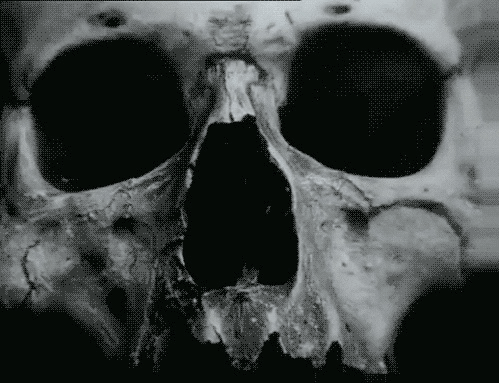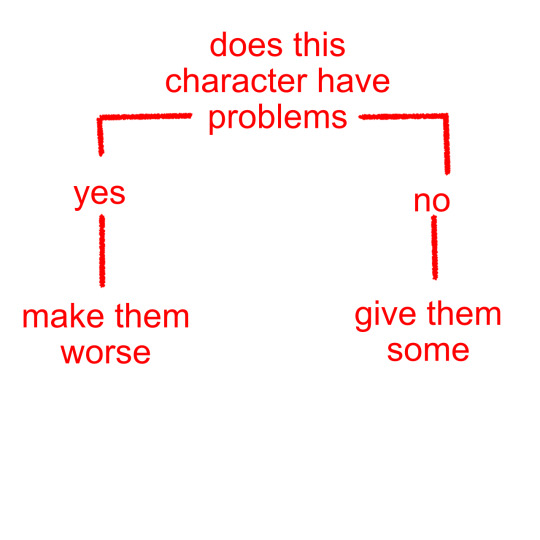She/Her, Fifties,Fan of Doctor Who for over 50 of it's 60 years.
Last active 60 minutes ago
Don't wanna be here? Send us removal request.
Text




BRAM STOKER'S DRACULA dir. Francis Ford Coppola, 1992
7K notes
·
View notes
Note
can we put the doctor on antidepressants. would that be ok for them....... god knows they need it
Can Gallifreyans take human antidepressants?
Gallifreyans have brains that are way more sophisticated than humans. They've got all the usual brainy bits—like a cerebrum, cerebellum, and brain stems—but with some extra bells and whistles that make them, well, alien. So here's why popping a Prozac might not be so straightforward.
🧠 Gallifreyan Brains
Gallifreyan brains are wired differently. They have an extra lobe specifically for time, a super-charged cerebellum for balance and coordination, and a cluster of nerves that lets them literally rewire their brain pathways. They even have a pineal gland that's beefed up to handle psionic abilities like telepathy. In short, their brains are very complex, which means they process things—including drugs—differently.
💊 The Problems with Human Antidepressants
Metabolism Might Be Too Fast: Gallifreyans have a super-efficient digestive and metabolic system, meaning they break down substances really quickly. A standard dose of antidepressants might just get chewed up and spit out by their system before it can do anything.
Neurotransmitter Differences: Antidepressants work by balancing neurotransmitters like serotonin and dopamine. Although Gallifreyan brains probably have these two, they might not rely on these chemicals in the same way, or they might have additional ones we don't even know about. Plus, their ability to control their brain's activity means they might override or negate the effects of the meds.
Psionic Side Effects: Gallifreyans use alpha waves for telepathy, and those same brainwaves are linked to mood regulation, which is what antidepressants can influence. Messing with these could throw their telepathic abilities out of whack, leading to issues like loss of telepathic control or psionic overloads.
Regeneration Risks: And then there's regeneration. Since regenerating involves a complete overhaul of their body and brain, anything that messes with their neurochemistry could potentially interfere with this process, and that's not something you want to gamble with.
📝 Types of Antidepressants and Gallifreyan Considerations
There are different classes of antidepressants, and each works a bit differently in humans. These differences could lead to varied effects on Gallifreyans:
SSRIs (Selective Serotonin Reuptake Inhibitors): These increase serotonin levels by blocking its reabsorption in the brain. For Gallifreyans, the effects could be dampened by their advanced neural controls, and the increase in serotonin might disrupt their natural balance of neurotransmitters.
SNRIs (Serotonin-Norepinephrine Reuptake Inhibitors): These work on both serotonin and norepinephrine. Given the potential extra neurotransmitters in a Gallifreyan brain, SNRIs could have unpredictable effects, possibly overloading the system or causing extreme mood swings.
MAOIs (Monoamine Oxidase Inhibitors): These prevent the breakdown of neurotransmitters. However, with the Gallifreyan ability to reroute neural pathways and regulate brain chemistry, MAOIs might interact unpredictably, potentially leading to a dangerous buildup of neurochemicals.
Tricyclics: These affect several neurotransmitters at once. For a Gallifreyan, the broad action of tricyclics could be too blunt an instrument, leading to severe side effects like disrupted time perception, cognitive confusion, or even interfering with the autonomic brain's control over vital functions.
⚠️ Potential Side Effects of Antidepressant Use in Gallifreyans
Considering their complex biology, Gallifreyans could experience a range of side effects from human antidepressants, including:
Telepathic Disruption: Loss of telepathic control or interference with psionic abilities.
Cognitive Overload: Overstimulation of neural pathways leading to headaches, confusion, or even temporary cognitive impairment.
Emotional Dysregulation: Extreme mood swings due to interference with their natural emotional balance.
Impaired Regeneration: Disruption of the regeneration process, leading to incomplete or faulty regeneration.
Metabolic Reactions: Ineffective metabolism of the drug leading to either no effect or toxic buildup.
🏫 So …
In theory, Gallifreyans could take human antidepressants, but they'd probably need something much stronger, specifically tailored to their biology. Standard human meds might not work as intended—or at all—and could even cause some pretty weird side effects that can't be predicted. Given their advanced neural controls, complex neurotransmitter systems, and unique regenerative abilities, Gallifreyan antidepressant therapy would need to be a highly specialised field all on its own. We await the arrival of the Universe's first Gallifreyan Pharmacologist.
Related:
💬|🥗💊How do recreational drugs affect Gallifreyans?: The effect of human drugs on Gallifreyans, and some of their own.
🤔|🥗😆Why is my Gallifreyan a little bit giggly today?
💬|🧑🤝🧑😔How do you help a lonely Time Lord?: Brief guide to helping your lonely Time Lord
Hope that helped! 😃
Any orange text is educated guesswork or theoretical. More content ... →📫Got a question? | 📚Complete list of Q+A and factoids →📢Announcements |🩻Biology |🗨️Language |🕰️Throwbacks |🤓Facts → Features: ⭐Guest Posts | 🍜Chomp Chomp with Myishu →🫀Gallifreyan Anatomy and Physiology Guide (pending) →⚕️Gallifreyan Emergency Medicine Guides →📝Source list (WIP) →📜Masterpost If you're finding your happy place in this part of the internet, feel free to buy a coffee to help keep our exhausted human conscious. She works full-time in medicine and is so very tired 😴
33 notes
·
View notes
Text
The most beautiful minds of our generation are posting fan fiction on archiveofourown.org
14K notes
·
View notes
Text








This is our most desperate hour. Help me, Obi-Wan Kenobi, you're my only hope.
CARRIE FISHER as PRINCESS LEIA ORGANA STAR WARS: A NEW HOPE | 1977
2K notes
·
View notes
Text
How to Introduce and End Flashbacks
Introducing a Flashback
Through Sensory Triggers A sound, smell, or physical sensation can catapult a character into a memory. Example: The faint scent of jasmine wafted through the open window, pulling her back to her grandmother’s garden. She could almost feel the warm sun on her back as they planted flowers together, her grandmother’s laugh ringing in her ears. Sensory cues are especially effective because they feel immediate and relatable.
Using an Object or Photo Physical items are natural prompts for reminiscing. Example: He picked up the crumpled letter, its edges worn with age. As his eyes scanned the familiar handwriting, the years fell away. He was 16 again, reading those very words for the first time.
Dialogue That Sparks a Memory A conversation can easily lead to a flashback when a particular word or phrase resonates. Example: “You always overthink everything,” she said, laughing. He froze. Those were the exact words his father had thrown at him that night, before slamming the door and leaving for good.
A Character’s Internal Reflection This works well in introspective or emotional scenes. Example: As she stared at the divorce papers, her mind drifted to the first time they’d met.
A Sudden Triggering Event High-emotion events often cause memories to resurface. Example: The screech of tires on asphalt sent a cold shiver down her spine. In a heartbeat, she was back on that icy road, watching headlights careen toward her father’s car.
Dream or Hallucination For a more surreal tone, a dream or hallucination can segue into a flashback. Example: The dream unfolded like a reel of film, showing her the beachside house they’d once called home. She saw herself, small and wide-eyed, chasing the waves as her father’s voice called out in laughter.
Abrupt, Emotional Break For intense moments, an abrupt flashback can mimic a real-life flood of memory. Example: The argument escalated, he slammed his fist on the table. The sound echoed in her ears, morphing into the memory of her father’s hand hitting the dining room table, his voice booming in anger.
Ways to End a Flashback
Tie Back to the Trigger Return to the sensory cue or object that initiated the flashback. Example: The scent of jasmine faded, and she blinked, back in her office. The garden was gone, replaced by the gray walls and the cold glow of her computer screen.
Return to Present Action Use a sharp, present-day event to jolt the character back. Example: “Hey, are you even listening?” Her coworker’s voice snapped her out of the memory. She turned, realizing she’d been staring at the clock for minutes. OR “Are you okay?” His voice cut through the silence, pulling her out of the memory. She nodded quickly, hiding her unease.
Reinforce the Emotional Impact Show how the flashback has affected the character’s current emotions or decisions. Example: The memory left her hands trembling. She wiped her eyes quickly, unwilling to let the tears win this time. She had a meeting to face.
Transition with a Parallel Action Use a seamless flow between the past and present through similar actions or emotions. Example: In the memory, she had dropped the vase, its shattering echoing in the quiet house. Back in the present, her hand hovered over a similar vase on the shelf. She hesitated, her breath shallow, before carefully setting it down as if the past might repeat itself.\
Narrative Reflection Let the character or narrator explicitly acknowledge the memory and its significance. Example: She exhaled, shaking off the memory like dust from an old book. It didn’t matter anymore, she told herself, but her heart still felt heavy.
Anchor to the Setting Bring the reader’s focus back to the surroundings. Example: The memory faded, and she was left staring at the cracked pavement under her feet, the late afternoon sun casting long shadows over the street.
620 notes
·
View notes
Text
How to get back into writing: a 5-steps guide
As someone who hasn't written anything in a decade, this is what I did to get back into writing seriously.
Identify which archetype of writer fits me better. You may have heard George R.R. Martin saying there are two types of writers: gardeners and architects. Whether you believe in that statement or not isn't relevant per se, but the actual meaning behind that point is that you need to get to know yourself as a writer, how you work, what you need, etc., so you can adapt your environment to achieve your goals. Speaking of which…Gentle reminder : you're a person not a robot. You are allowed to work the way you want to, and not to follow whatever pieces of advice that are linked to these archetypes.
Set a realistic word count/session I can stick to over the long term. When you're a 9-6 office employee, it's not always easy to find time to write and sometime our day at work got the very best of us. Having that in mind, I set my word count up to 200-500 words per session or 1 chapter per week (they're rather small in my case). Gentle reminder : babysteps are better than no-step at all.
If I'm not writing, fine, I'll do some research or anything else. Your story will always require something from you. When I'm not in the mood for writing, there are two options : forcing myself or doing what I call para-writing. For instance it's : reading articles or books about improving my writing style, improving my worldbuilding, drawing a map of my city etc. This are not things that would appear in the novel but it would guide me throughout the process the way a walking-stick would do for an injured man. Gentle reminder : you always find something useful to do but at the end of the day, you still have to write.
Have a general idea of what I want to tell. I won't lie, I've plotted my entire novel from the very beginning to the very end, which means I know exactly what to write and when. If you're against having a defined plot, I'm no one to judge, but having at least the key events or the major points will definitely help you. Like a lighthouse, it will help you navigate through the mists of confusion or hesitation. Gentle reminder : It's better to know where to go even if you end up losing yourself along the journey. Having the map doesn't mean you have to follow it, but rather when you can allow yourself to take a step to the side.
Write something I enjoy. A bit cliché I admit, but it's the best advice I could give. You'll spend hours, days, weeks - even years !- on that story so better buckle up to something you really want to write. Otherwise the risk is to abandon that hard-work you've done halfway through the process. No one needs that frustration and that self-doubting questionnings. No one. Not you. Not even me. Gentle reminder : it's okay to want readers and reviews but I promise you, your writing will be really different on something you trully want to share...Remember how pissful it was to write an essay for class you didn't want to ?
429 notes
·
View notes
Text
To my writers out there
Just because you didn’t write 1k to 10k words today didn’t mean you didn’t write.
You wouldn’t have a book to begin with if you haven’t envisioned, brainstormed and edited previous chapters. Word count is a cute marker to show off, but the real work starts from behind the scenes of a word count.
Some days I feel like I haven’t gotten anything done because my word count hasn’t gone up, but then I remember I edited and brainstormed ideas to fix plot holes.
Word count isn’t a count of the amount of work you have put in.
Happy writing guys.
176 notes
·
View notes
Text
Eating Disorder Recovery Websites
Eating Disorder Recovery Websites:
- https://www.nationaleatingdisorders.org Dedicated to advocacy for eating disorder recovery. It provides resources to spread awareness and recovery. It also provides stories of hope that encourages others to seek out recovery.
- http://eatingdisorderrecovery.com/index.php/home - Features a free eating disorder recovery workbook that helps you manage eating disorder symptoms. Includes blogs to help inspire eating disorder recovery. Allows visitors to post and discuss problems and questions in a forum that is monitored.
- http://eatingdisorderscoalition.org/ - Advocacy at its best! This site is your guide to help get legislators and representatives to hear your voice and get legal action for eating disorder help and recovery. You can find facts and information about eating disorders on this site. You can learn how you can advocate and lobby for eating disorder recovery at the federal and state level.
- https://mentorconnect-ed.org/finding-support/ The website is still active due to the additional resources it provides on this page specifically. While in business it paired mentors and mentees together to help those who are struggling with an eating disorder to share experiences, provide guidance, and help navigate through the journey of recovery.
- https://www.theprojectheal.org “Project HEAL’s vision is to create a world where everyone with an eating disorder has the opportunities & resources they need to heal. Our programs break down systemic, healthcare, and financial barriers that millions of people in the U.S. face when trying to heal from their eating disorder.”
- https://www.allianceforeatingdisorders.com “The Alliance offers comprehensive services, including:
Free, therapist-staffed helpline offering support and referrals to all levels of care.
Comprehensive and interactive referral website and app, findEDhelp.com.
Free, weekly, therapist-led support groups nationwide (virtual and in-person) for those experiencing eating disorders and for their loved ones.
Educational presentations and training days.” And more
1K notes
·
View notes









